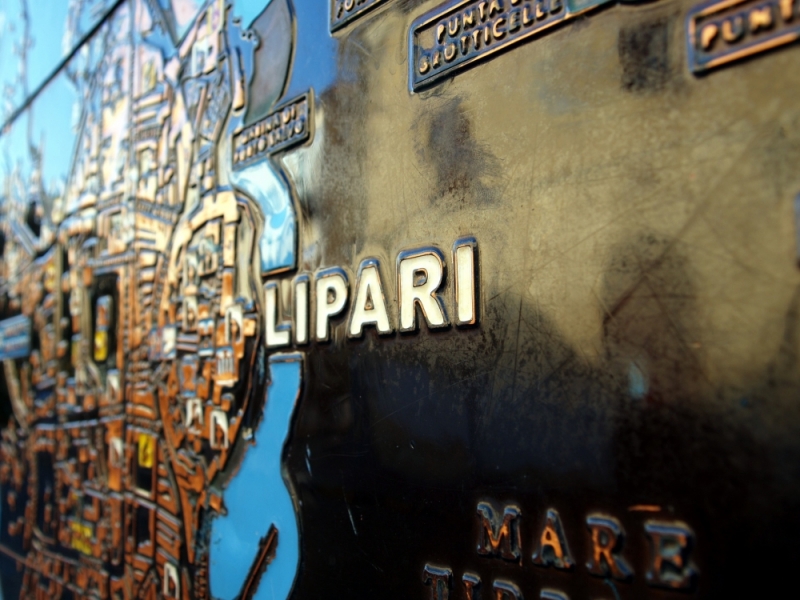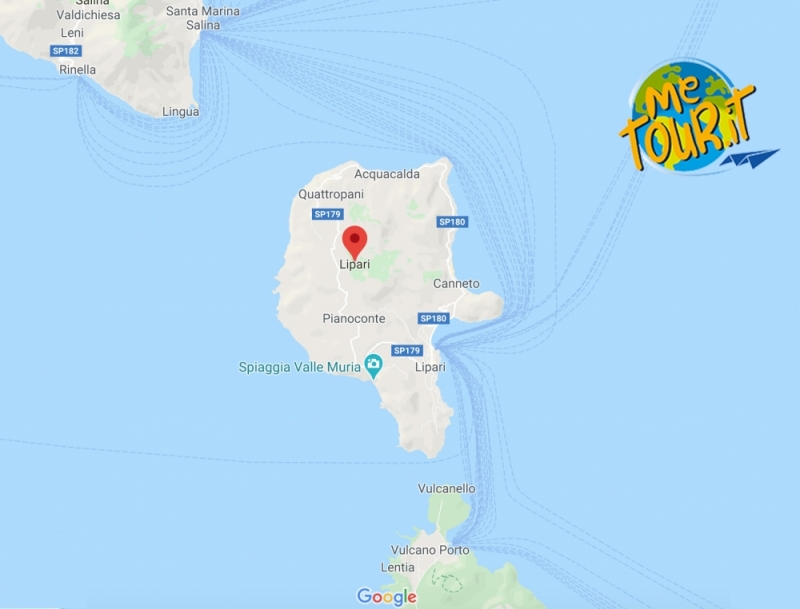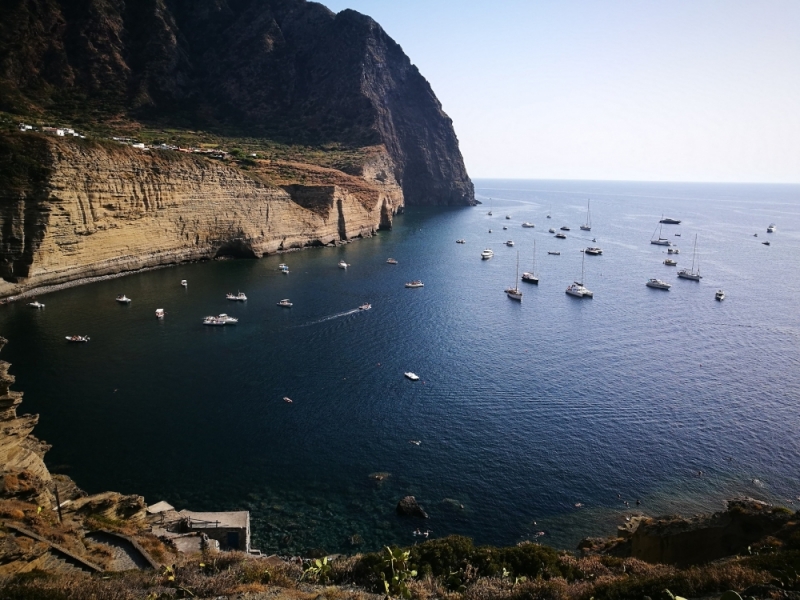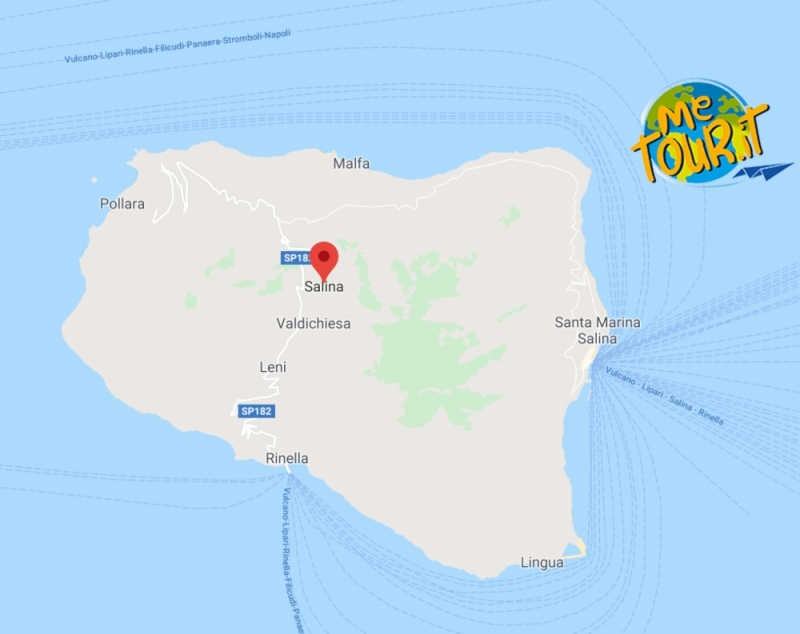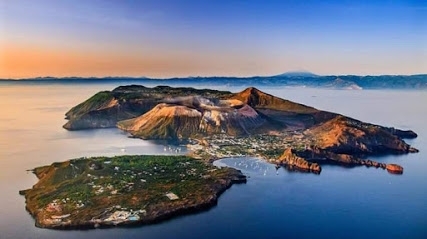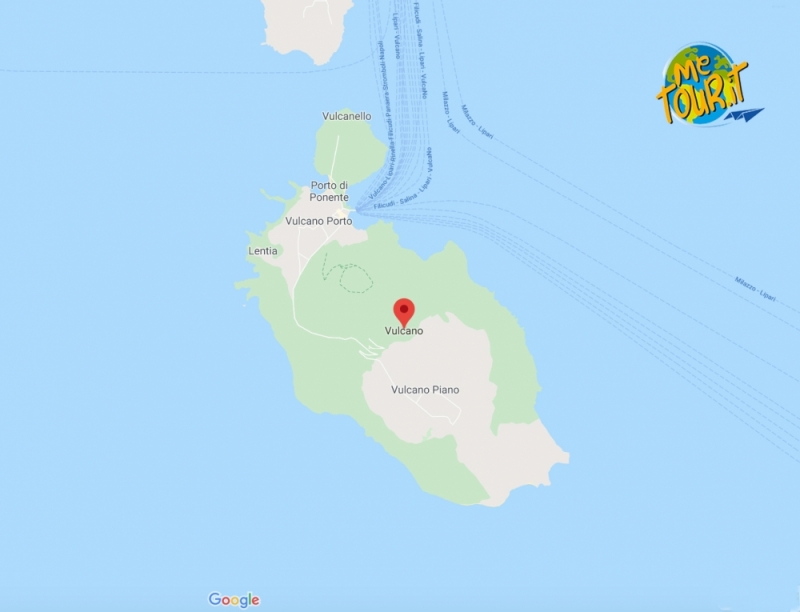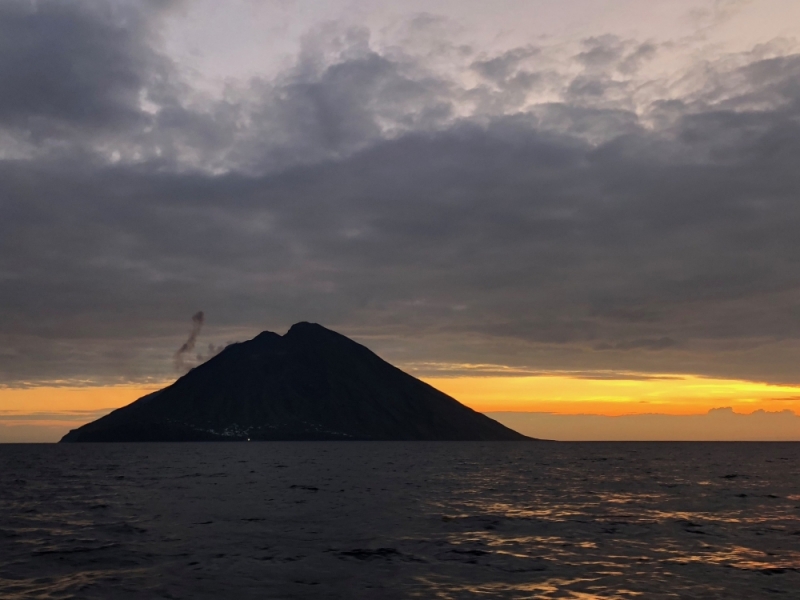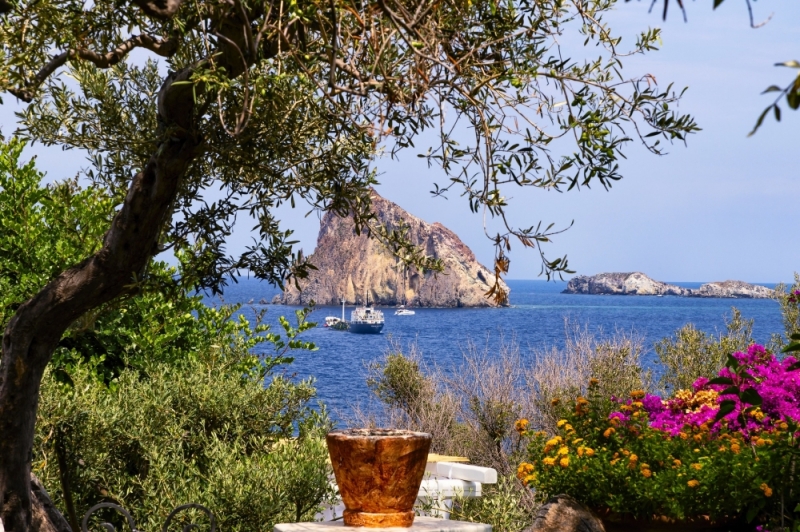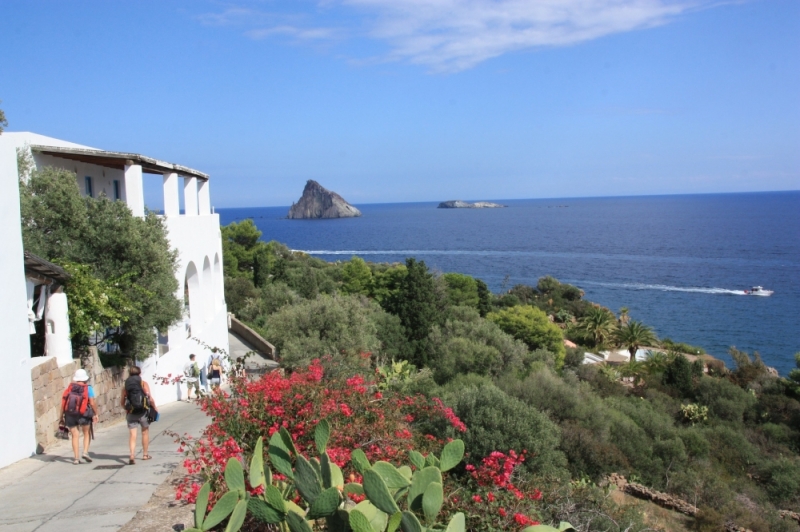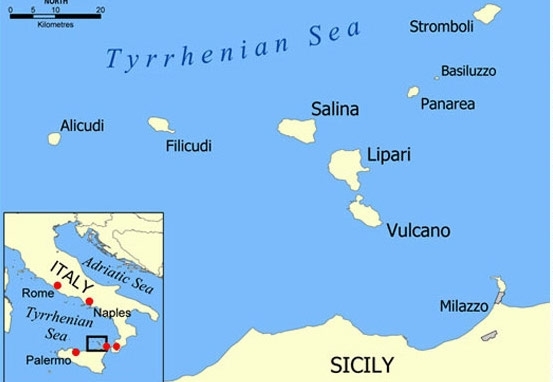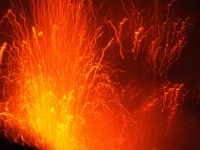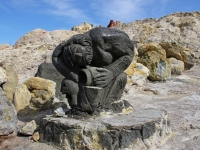the Archipelago of the Aeolian Islands
The archipelago of the Aeolian Islands , called Ìsuli Eoli in Sicilian or also called the Lipari Islands, is made up of 7 islands, all of volcanic origin, located in the southern Tyrrhenian Sea opposite the north coast of Sicily at the height of Cape Milazzo from which they are less than 12 nautical miles away. Naturalistically beautiful, they are visited every year by 600,000 visitors, they were proclaimed a World Heritage Site by UNESCO in 2000, and include two active volcanoes, Stromboli and Vulcano. Already inhabited since prehistory due to the presence of large quantities of obsidian, where the first settlements occurred already in the Neolithic age between 5500 and 4000 BC, precisely in Lipari and Salina with traces of ceramic vases and worked obsidian. From the Neolithic period, the remains of a hut with fragments of clay mixture were discovered on the Rinicedda plateau in Leni (Salina Island). The settlement of Castellaro Vecchio on Lipari dates back to the same period, where ceramics belonging to the Stentinello culture were found. One of the most advanced phases of the Neolithic is the discovery of a fragment painted in the Serra d'Alto style from the Milazzese promontory in Panarea. In the 4th millennium BC, during the period of the Diana culture linked to the village of the Diana district in Lipari, settlements arose on all the islands except Vulcano. From the Copper Age (3000-2300 BC) there are traces of huts near Filicudi, Panarea, Stromboli and Salina. In Stromboli sul Serro Fareddu there is an insertion of the Pianoconte facies at 130 m above sea level. While in Panarea on the Piano Quartara some ceramics from the Malpasso-S. culture were discovered. Hippolytus. Later, passing through the important presence of the Greeks and Romans, they were inhabited by Arabs, Normans and Spaniards. Also famous for the precious Caper and Malvasia, the seven islands, in order of size, are: Lipari (it is the largest island, the most inhabited and the most frequented by tourists), Salina (for tranquility, the presence of small beaches it is the favored by families with children, as well as being among the greenest in the archipelago), Vulcano and Stromboli (frequented mainly by young, party-goers, rugged and wild), Filicudi and Alicudi (considered the "wild" ones with their uncontaminated environment, a refuge from tourism mass), Panarea (the most fashionable and VIP island of the seven).
Lipari island
With its 37.6 km² and approximately 10,700 inhabitants, it is the largest island of the Archipelago and also the most popular with tourists. Called Meligunis by the Greeks for its mild climate, it has a surprising variety of landscapes thanks to its geological complexity, just think that it has been modeled over the centuries by twelve volcanoes. Known and exploited in the past for its wealth of pumice and obsidian, these 2 minerals today give the island the contrast of white and black of beautiful beaches. The homonymous town extends at the foot of the imposing Castle fortress, the ancient Greek acropolis, and along the inlets, to the north and south, of Marina Corta and Marina Lunga. The houses climb up under the ramparts and the most characteristic street is via Garibaldi . This connects the castle of Lipari with Piazza Ugo di Sant'Onofrio, called " Marina Corta ". Marina corta is, without doubt, the most popular square of the Aeolian Islands on summer evenings, thanks to the fact that it overlooks the sea directly and is full of bars, ice cream parlors and restaurants. Here the statue of San Bartolo, patron of Lipari, welcomes tourists. At the far end of the square is the fortress of Lipari Castle , while on the sea side stands the historic Church of the Souls of Purgatory . Corso Vittorio Emanuele , the old Roman decuman, always very animated by tourists and liparoti, is the main street where craft and clothing shops, bars and meeting places follow one another. In the historic center, from Piazza Giuseppe Mazzini , known as "Sopra la Civita", you can access the castle and the Cathedral of San Bartolomeo , voted in 1084 and probably built in the Ruggerian age (1130 AD) and remodeled in various eras, until 1861 with the late Baroque facade.
Ships and hydrofoils land in Marina Lunga . Its volcanic nature is evident in the Muria Valley , with its red rocks, and on the north-eastern coast, covered by a vast flow of pumice which hides Roman ruins of the 4th century. AD The Monfalcone square opens onto the course , with renowned patisseries and restaurants with outdoor tables. At the Hotel Oriente, an ethnological collection of arts and crafts curated by Edoardo Bongiorno: agricultural and handicraft tools that man has used in the last two centuries, locks, bolts, tools for blacksmiths and carpenters, scales, stater, typewriters , coffee machines, a Sicilian cart, old tools and many ancient prints. In the vicinity there is the Archaeological Park of Contrada Diana with its vast necropolis. The regional Aeolian archaeological museum , located in the Lipari Castle complex, is one of the most important in the Mediterranean and has about fifty rooms, in which the archaeological materials are displayed in chronological order. You can admire precious materials from both the inhabited area and from the funerary furnishings, vases, memorial stones, tombstones and stone sarcophagi which testify to the evolution of the cult of the dead. In addition, ceramics of various types and styles, theatrical masks and clay statues. The legendary wealth of Lipari were certainly also the spas that flowed healthy, warm and beneficial in different points of the island. The T erme di San Calogero are an important thermal establishment a stone's throw from the towns of Lipari. Then there are the thermal baths of Bagno Secco and Pignataro and numerous pools of Hellenistic origin. In Lipari, but as in all the Aeolian Islands, particular and delicious desserts are eaten. The Nacatole have a mixture of almond paste, tangerine juice and spices. The exterior is worked with very fine decorations. Spicchitedda is made with cooked must, various spices, mandarin and cinnamon. Do not miss to buy the typical Malvasia and capers, while the pumice beaches and the Pietra Liscia beach are a must see. The Gabbiano beach , wild and nestled in the mountains, can only be reached by boat. It is a paradise for those who love snorkeling and is located in the North East area of Lipari. From here you can admire the island of Salina. To get to the Gabbiano beach you can use the private Beach Service with departures from Canneto.
Salina island
With 26.8 km² and approximately 2,300 inhabitants, with the Faraglione rock, it is the second largest island of the Archipelago. It mainly arrives in Santa Marina where there is also a marina, on the south-west side there is the Rinella airport. Salina is large and enjoys a luxuriant nature. The most convenient way to visit it is to rent a scooter or car, but the public bus service also works well. By turning it, you will see shapes the unusual shapes taken by lava flows. The town of Santa Marina stands on the slopes of the Fossa delle Felci, a covered crater mainly covered by ferns and is the busiest area of the whole island because it is full of shops and clubs open until late at night. Here you can admire the wonderful eighteenth-century church with its characteristic bell towers. This area is the busiest point of the whole island because it is full of shops and clubs that flock for the nightlife in the evening. In the western part of Santa Marina, in the locality of Serro dell'Acqua, it is possible to visit the Saracen caves , dug into the tuff, fascinating for their morphological structure, hidden by dense vegetation, they were used as a refuge to escape the barbarism committed by the Saracens around 650 AD The town of Lingua is a small fishing village in the north-eastern part of the island, very particular for its pebble beach and crystal clear sea. Here, in Vallone Zappini, you can see the eighteenth-century stone bridge that is part of the ancient road. Not far from the center, there is a nature reserve with a beautiful lake of brackish water, separated from the sea by a thin strip of land, used in the Greek period some saline. The place, headed by an ancient lighthouse, is the perfect place for bird watchers who can observe the mgration of different birds. A word of advice: do not go away before having eaten a granita from Alfredo at sunset in front of the sea. Choose one of the many flavors offered (from fresh fruit, almond, coffee, etc), because what you take, I assure you that you are not wrong and, indeed, that granita, is worth the whole trip to the Aeolian Islands.
Malfa owes its name to the emigration of a large community of Amalfi in the XII century. On the northern coast of the island, in the valley between Monte Rivi and Monte Porri. The small village, characteristic for a small beach of pebbles and lava rocks, has a small port called Scario Galera and, in the main square, it is possible to admire the church of Sant'Anna, dating back to the eighteenth century. Its interior houses numerous paintings and sculptures: the Nativity of the Virgin of 1742, the Madonna of the Rosary of the nineteenth century, the Madonna of the Guard of the twentieth century, the wooden sculpture depicting the Sacred Heart of 1925, the sculpture of Sant ' Anna with Virgin and Child of the twentieth century and a last sculpture with the effigy of St. Joseph with Jesus. The area around the Church is full of clubs and shops. The most beautiful beach on the island of Salina is certainly the one located in the hamlet of Pollara. Located under a steep cliff in the shape of an amphitheater overlooking the sea, it is one of the most fascinating places in all the Aeolian Islands, accessed via a steep staircase. From this beach it is possible to admire a spectacular intense red sunset, which acts as a background for the arch in the foreground and the beautiful islands of Alicudi and Filicudi in the background. The faraglione, the result of an ancient partially collapsed crater, rises from the sea as a "guardian". The town rises around the patronal church of Sant'Onofrio , built in 1853, where the statue of the Immaculate Conception of Sant'Onofrio is kept, some paintings offered to the Madonna and the original floor. In the municipality of Leni, so called by the Greeks for the typical jars in which the grapes were pressed, it is possible to visit the beautiful Sanctuary of the Madonna del Terzito, where the beautiful image depicting the Virgin Mary is preserved in the act of protecting the islands . The small fishing village of Rinella represents one of the most characteristic places of the entire island, where you can swim from a wonderful black sand beach, Here the crescent-shaped beach is topped by caves carved into the rock where a Once the fishermen hospitalized their fishing boats. This bay, with shallow, sandy bottoms, is a paradise for snorkelling enthusiasts because here, thanks to volcanic activity with the release of hot gases and vapors from the seabed, the water has a perfect temperature for the proliferation of flora and to marine fauna. A tip: Do not go away from the Island of Salina without having seen the sunset at least once from the highest panoramic point of this island, namely Monte delle Felci. Enjoy it with your love side by side, you will discover yourself even more in love and you will carry away in your heart a memory that you will never forget.
Vulcano Island
Vulcano , at the southern end of the archipelago, is the first Aeolian island that we encounter starting from Milazzo. It is approximately 21 km² and has approximately 300 resident inhabitants. Of the islands of the archipelago, it is certainly the most "energetic", the one that has an always active volcano, with primordial charm with black sand beaches, fumaroles, the acrid smell of sulfur and the still wild nature. Called in ancient times Therasia, then Hiera, because it is sacred to the god Vulcan; hence, finally, its current name given by the Romans. Hence the terms volcano and volcanism. The volcano called "della Fossa" dominates the island with its imposing presence. From the top, for trekking lovers and with a little effort, you can enjoy an incomparable panorama, with a view of the island of Stromboli and the spectacle of the sky that joins the sea. I recommend doing this excursion ONLY accompanied by authorized guides, given the toxicity of the gases emitted by the fumaroles.
Ships and hydrofoils dock at Porto di Levante , but, before attempting to climb the volcano, it is perhaps better to get an idea of the place. It is suggestive to reach the top of the Faraglione di Levante (36 meters), just to the right of the pier. From here you can clearly see Vulcanello , which arose from the sea in 183 BC following various underwater eruptions. It is connected to the island by an isthmus of sand and lava which has created two bays. To the east, you can see the natural pond of hot mud, also known in Roman times for the treatment of rheumatic forms, arthrosis and skin diseases. The writer could not resist and dived, despite the intense smell. Near the lake, the cooling water of the sea reserves a surprise: submarine "fumaroles" that heat some parts of the low stony bottom. It is better to go into the water with beach shoes so as not to burn your feet. "Being immersed in the bubbling water is a unique experience and gives a feeling of great well-being". The black and very fine volcanic sand distinguishes the west beach which hosts a myriad of boats in its bay and is the most popular with swimmers. The black sand beach is bordered on the left by the Scoglio delle Sirene and on the right by Vulcanello where the Valle dei Mostri is located. The valley takes its name from the particular shapes of the rocks shaped by the wind and the sea, in the midst of black sand dunes. Vulcanello has two extinct craters and a luxuriant vegetation.
To visit the rest of the island the best way is to rent a Vespa or a scooter at the port, from Noleggio Sprint (tel. 347 7600275), Paolo (tel. 090 9852112), Jolly Motor (tel. 090 9852440) or make a tour of the island Taxi (tel. 366 3028712).
To visit the rest of the island the best way is to rent a Vespa or a scooter at the port, from Noleggio Sprint (tel. 347 7600275), Paolo (tel. 090 9852112), Jolly Motor (tel. 090 9852440) or make a tour of the island Taxi (tel. 366 3028712).
The "life" of Vulcano is centered around the Porto di Levante area and its small square. At any time you can enjoy a granita in the popular bars; in the evening you can meet for an ice cream by taking the classic evening walks between one shop and another.
Vulcano, of all, is the island that refers to that ideal relationship between man and the primordial, the need to feel perfectly part of a nature that has in itself all that is needed for the psychophysical well-being of man. The action of man, carried out on the island, perfectly marries that perfect agreement and that perfect balance, so desired by lovers of paradises like this, that technique and nature can concretize: intervene on the environment, partially, without damaging its naturalness for the sole purpose of bringing out, as much as possible, the resources already present. Not surprisingly, it is possible to enjoy the benefits of thermal waters and sulphurous waters. You can also admire the mighty Stromboli volcano which seems to send smoke signals to visitors who watch it from the opposite top. The natural heat, for the presence of sulphurous waters and for the god Apollo who kisses and masters the beloved south, makes Vulcano famous for its thermal baths and black sand beaches.
Stromboli island
Stromboli, we find it at the north-east end of the archipelago. The island measures 12.6 km² and has a resident population of about 400 inhabitants. Its geological history begins about 200,000 years ago, when a first large active volcano emerges from the sea, of which today only the solidified conduit represented by the islet of Strombolicchio remains. We know that it has been inhabited since ancient times thanks to the important discovery of the prehistoric village of San Vincenzo. Its economy has always been based on the olive tree, grapevine (malvasia), figs and peach, to the point of being so flourishing that in 1891 in Stromboli there were about 2 700 inhabitants. But changed economic conditions, the eruption of eruptions and earthquakes (in particular that of 1930) and vintages difficult for the vine, forced most of the Strombolans to emigrate. The main inhabited villages are San Vincenzo (or simply the town of Stromboli) with the historical landing place of Scari, Piscità and Ficogrande , which was once the shipowners' village. Living, even for one night, means getting closer to our primordial side, feeding on the uncontrolled and explosive energy of " Iddu " (this is how the volcano is called), while descending into a chaotic and therefore emotional nature, in a local tradition intact, memory of a time and of reserved but welcoming and helpful men and women. The black giant, "Iddu", stands out in all its grandeur on the blue sea (very intense here) and is already visible at dusk, approaching the island, thanks to the mini lava explosions in the neck of the volcano, which occur at intervals regular 15/20 minutes. A perennial explosive activity, which with its three mouths inspires fearful respect. While in the other islands the evening is dedicated to the tour of the premises, an aperitif or shopping, here at dusk we organize ourselves to enjoy the show that every evening gives "Iddu" with its eruptions and lava flows. Groups of people, organized with expert guides and adequately equipped, climb the volcano at Pizzo at 900 meters, while others embark on Scari to go under the Sciara del Fuoco and watch the spectacle of incandescent lapilli from the sea. Like when effusive eruptions occurred in 2003, the lava river reaches the sea, releasing large columns of steam. Other possible activities are night fishing for squid fishing.
Curiosity: here in 1949 the director Roberto Rossellini shot "Stromboli", played by Ingrid Bergman. In via Vittorio Emanuele there is a plaque indicating the house where the director and actress lived their love story.
Filicudi island
Filicudi , together with its twin sister Alicudi, is the westernmost island of the Aeolian archipelago. Filicudi has about 250 inhabitants called "filicudari" who live close to the two natural ports of the island, the Porto and Pecorini Mare , where ships from Palermo, Milazzo, Lipari but also from Naples dock. And it is precisely Pecorini Mare that in summer becomes the meeting place for tourists who, with their boats, come here to have an aperitif in the small village or eat a plate of spaghetti with cherry and almond pesto, in one of the restaurants located in this area. But Filicudi, as well as Alicudi, is made to be lived in the sea. Yes, because the best view of the splendid extinct volcano that constitutes the island of Filicudi is from the sea. In addition, by boat you can visit some magical places of this wild wind island. You can go to the Grotta del Bue Marino so called because the sounds of the waves of the sea recall the sound of an ox. In addition, there is the Scoglio delle Canne , where you can go scuba diving to see corals and sea sponges, but also the Scoglio del Gianfante , a basaltic rock resulting from a volcanic eruption, of which only the central lava column remains. But if you decide to stay on the island then we advise you to bring adequate shoes because the beaches are all pebbles and therefore it is preferable to go there with your feet protected to avoid hurting yourself. In the same way, if you decide to go hiking on the many paths on the island, we recommend hiking shoes because there are only one asphalted roads.
Alicudi island
Alicudi is located at the western end of the archipelago, about 63 km from Lipari and is the most distant and also the wildest island of the Aeolian islands. It consists of an extinct volcano formed about 150,000 years ago and is inhabited by 105 inhabitants who live in the typical white Olian houses and with huge terraces overlooking the sea, built along the terraces of the volcano, on which there are also olive cultivations and capers. Alicudi is mainly characterized by pebbly beaches, some of which are best reached by sea. Yes, because, even if the walking experience is fantastic, it is also somewhat risky, due to the possible fall of rocks and the paths that are not always easily accessible. You will arrive in Alicudi for the only port of the island, Scalo Palomba , the only port on the island around which the few services on the island have developed. Yes, because in Alicudi you won't find great restaurants, bars and discos. And also remember that once you arrive in Alicudi, you can only walk on foot or using mules. Alicudi is only landscapes and sea and, above all, if you are lovers, we recommend underwater fishing, especially near the Scoglio della Jalera .
Panarea island
Panarea is the smallest of the Aeolian islands and is also the oldest from a geological point of view. Panarea is also the most famous of the islands, in fact, since tourism exploded in the late 70s, it has become a destination for tourists from all over the world who are looking for a social holiday but in full contact with nature. Panarea is called the VIP Island as there are many famous people who choose it for their holidays. In fact, we can say with certainty that its 200 permanent inhabitants become 10 times more in the summer. Panarea is very characteristic, with its white houses, its picturesque alleys that are born corners from which you can admire the blue sea. Once in Panarea, to welcome you there will be the Ditella district which is the road that will lead you to Calcara beach, famous for its fumaroles that heat the water bringing it to almost sauna temperatures. But the main pivot of Panarea is San Pietro : it is here that social life takes place and where you can easily meet VIPs. San Pietro is an agglomeration of typical white houses with blue doors, which develop all around the homonymous church dedicated to the patron saint of the island. Every year, in honor of San Pietro, in June there is a festival during which the statue of the saint is carried in procession through the streets of the island. The most touching moment of this procession occurs when the statue is put on a boat and taken to the sea. The two-day celebrations for San Pietro, on 28 and 29 June and, in addition to the procession, there are shows, songs, dances and stalls selling or cooking typical products. Panarea also has many beautiful beaches such as Cala Junco which is considered by many to be the most beautiful beach on the island. Another thing to see is the Prehistoric Village of Capo Milazzese , the most important archaeological site of Panarea which testifies to the presence of man on this island already in prehistoric times.
Climate, Curiosities and Tips
Climate: The climate of the Aeolian islands is always temperate, typical of central-Mediterranean areas, influenced not only by latitude and geographical position, but also by the presence of the sea. On winter days the thermometer never drops below 14 degrees and summers are never torrid because they are mitigated by the sea breeze. The averages range from 14 C. in the winter period (December / January), to 20 ° C. in the spring season (April / May), from 27 ° - 32 ° C. in the summer season (July) and 21 ° C . of the autumn one (October). Precipitation is not abundant and well distributed in about 50-90 days of rain a year, with the maximum peak in the winter season. The most suitable period to go to the Aeolian Islands is very long: it goes from mid-April until the end of October, even if tourism here almost never stops, especially in the larger islands. Swimming in the sea can also be done in May or October with a water temperature of around 20 ° C.
Curiosity: among the curiosities it is certainly to be known that between island and island you can reach over 2000 meters of depth and that each island is a real mountain in the middle of the sea, which from the base of the seabed to their top can reach 3000 meters. The color of the dark blue sea is precisely due to the great depths. Between Salina and Panarea, about halfway, right in front of the hotel, there is the Secca del Capo, a submerged mountain that reaches just 8 meters above sea level, a fantastic place for diving! Every year the SalinaDocFest film festival is organized, but above all to know is that the bay of Pollara on the island of Salina was the set where the film " Il Postino" was shot , the last work of the late actor-director Massimo Troisi .
Tips: base in one of the islands and then, if you can, dedicate a few days to visit the other islands, because each one, although part of the same Archipelago, are different and offer unique panoramas and features. Among the most suitable for families with children is Salina. To move around, use the ferries to find out about the timetables, they work well and are cheap. If you want to do something different, visit the islands from the sea with one of the many boats (usually former converted fishing boats) that offer this service. The knowledge of the places that guide them will allow you to see hidden corners that you would never find alone and which are real surprises of nature. Often they also offer lunch on board with delicious km0 products and the opportunity to swim in fabulous coves. To taste absolutely Arancine, Cannoli, Cornetti with cannolo cream and the typical Cunzato Bread: a simple dish of the Aeolian tradition, but very tasty. Literally it is seasoned bread: a half loaf of bread topped with cherry tomatoes, oregano, Aeolian capers and other genuine products such as tuna, ricotta or aubergines. If you visit these islands in August it is easy that you can get involved in the typical patronal festivals that, almost every evening, take place in the different municipalities. Parties where fires, like delicious street food, can never be missing.


